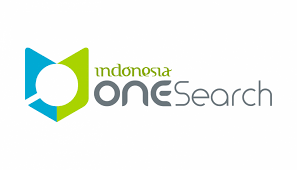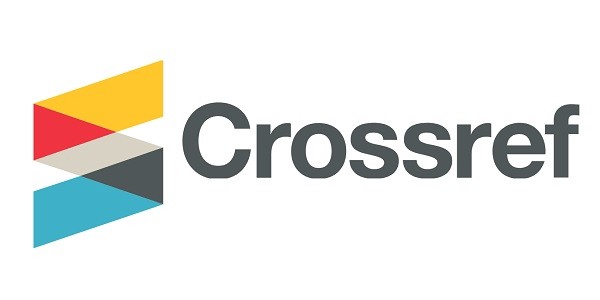The antecedent effect of the service quality dimension on customer satisfaction on word of mouth (Study on Perumdam Maruang Duhung)
DOI:
https://doi.org/10.52300/jemba.v5i1.19955Keywords:
service quality, customer satisfaction, word of mouthAbstract
This study aims to analyze how much the antecedent of the service quality dimension on customer satisfaction affects word of mouth. This research was conducted on Perumdam customers domiciled in Kuala Kurun, with a sample of 80 respondents determined through predetermined criteria. Data collection was carried out by sharing questionnaires through Google forms. This study uses the analysis of the Partial Least Squares (PLS) model to evaluate the relationship between variables. The results show that the variables of assurance, reliability, and empathy have a significant effect on customer satisfaction. Meanwhile, the variables of tangibles and responsiveness did not have a significant effect on satisfaction. For the customer satisfaction variable, it has a significant influence on word of mouth. This study highlights the important role of the service quality dimension on customer satisfaction so that it has an impact on providing positive comments.
Downloads
References
Aldrin Akbar. (2023). The impact of service quality dimensions on customer satisfaction in public utilities. Journal of Business and Management, 15(2), 45–60.
Anggabrata, B., & Rahanata, G. (2015). Service quality and customer satisfaction in public sector enterprises. Journal of Public Service Management, 8(3), 112–125.
Budiarno, S., Wijaya, T., & Santoso, R. (2022). Negative effects of service quality on customer satisfaction: A case study of water utilities. International Journal of Service Management, 10(1), 78–92.
Chaparro-Peláez, J., Acquila-Natale, E., & Hernández-García, Á. (2015). Service recovery and word of mouth in online sales. Journal of Consumer Behavior, 14(4), 200–215.
Dewi, R. (2023). The role of service quality in customer satisfaction: A case study of water utilities. JEMBA: Journal of Economics, Management, Business, and Accounting, 5(1), 12–25.
Fadli, M. F., & Giovanni, J. (2021). Pengaruh Kualitas Layanan, Nilai Pelanggan, Customer Relationship ManagemenT (CRM) Terhadap Kepuasan Pelanggan Dan Loyalitas Pelanggan (Studi Pada PT. BPR Prima Multi Makmur). Jurnal Ekonomi Integra, 11(2), 152-163.
Ghozali, I. (2015). Partial least squares: Concepts, techniques, and applications. Diponegoro University Press.
Giovanni, J., Subianto, P., & Pungan, Y. (2024). Review of financials, sales, and marketing strategy for micro, small, and medium enterprises in Palangka Raya City. Journal Magister Ilmu Ekonomi Universtas Palangka Raya: GROWTH, 10(2), 78-88.
Haditya Murpraptomo, Suryanto, T., & Kusuma, H. (2019). Customer satisfaction and word of mouth in public services. Journal of Marketing Research, 22(3), 155–170.
Hsu, C. (2018). The role of empathy in customer satisfaction and loyalty. Journal of Service Science, 11(2), 89–104.
Juliani, R. (2017). Clean water management and its impact on community welfare. Environmental Management Journal, 5(1), 34–48.
Kotler, P., Keller, K. L., & Chernev, A. (2021). Marketing management (16th ed.). Pearson Education.
Kurniasari, D., & Kusumaningtyas Sugiyanto, R. (2020). Service quality dimensions and customer satisfaction in public utilities. Journal of Business and Economics, 12(4), 67–82.
Ldrus, S. (2019). Service quality and consumer expectations. Journal of Consumer Studies, 7(2), 55–70.
Mahira, R., Fitriani, A., & Nugroho, B. (2021). Measuring service quality using RATER indicators. Journal of Service Excellence, 9(1), 23–38.
Makrifah, S., & Trishananto, M. (2021). The influence of tangibles on customer satisfaction in public services. Journal of Public Sector Management, 14(2), 90–105.
Novitawati, N., Sari, M., & Putra, D. (2019). Responsiveness and its impact on customer satisfaction. Journal of Service Quality, 8(3), 112–128.
Ningsih, A., & Hurnis, D. (2024). Word of mouth communication in service industries. Journal of Communication Studies, 16(1), 45–60.
Prasetyo, A. (2022). Analyzing the impact of empathy on customer satisfaction in public services. JEMBA: Journal of Economics, Management, Business, and Accounting, 4(2), 30–45.
Purwanti, S., Handayani, R., & Wijayanti, T. (2014). Clean water supply and affordability in rural areas. Journal of Environmental Economics, 6(2), 78–92.
Putri Maulidiah, E., Rahmawati, D., & Setiawan, A. (2023). Customer satisfaction and its determinants in public utilities. Journal of Consumer Satisfaction, 10(1), 34–49.
Rahayu, S., & Ester, L. (2023). Empathy and customer satisfaction in service delivery. Journal of Service Psychology, 11(2), 67–82.
Sanjaya, I., & Yasa, N. (2018). Customer satisfaction and word of mouth in public utilities. Journal of Business Communication, 15(3), 100–115.
Sari, M. (2021). Word of mouth as a result of customer satisfaction in service industries. JEMBA: Journal of Economics, Management, Business, and Accounting, 3(3), 50–65.
Situmeang, F., Hartono, B., & Pratiwi, R. (2019). Service actions and customer satisfaction. Journal of Service Management, 7(4), 56–71.
Sunyoto, D. (2014). Marketing and customer needs fulfillment. Journal of Marketing Science, 12(1), 23–38.
Tjiptono, F., & Chandra, G. (2011). Service, quality, and satisfaction. Andi Offset.
Wicaksono, A. (2017). Reliability and its impact on customer satisfaction. Journal of Service Reliability, 9(2), 45–60.
Yuniarti, S., & Hendriani, S. (2016). Customer responses to service quality. Journal of Consumer Psychology, 14(3), 78–92.
Zikri, A., & Harahap, D. (2022). Customer satisfaction and service performance. Journal of Business Performance, 10(4), 112–128.











